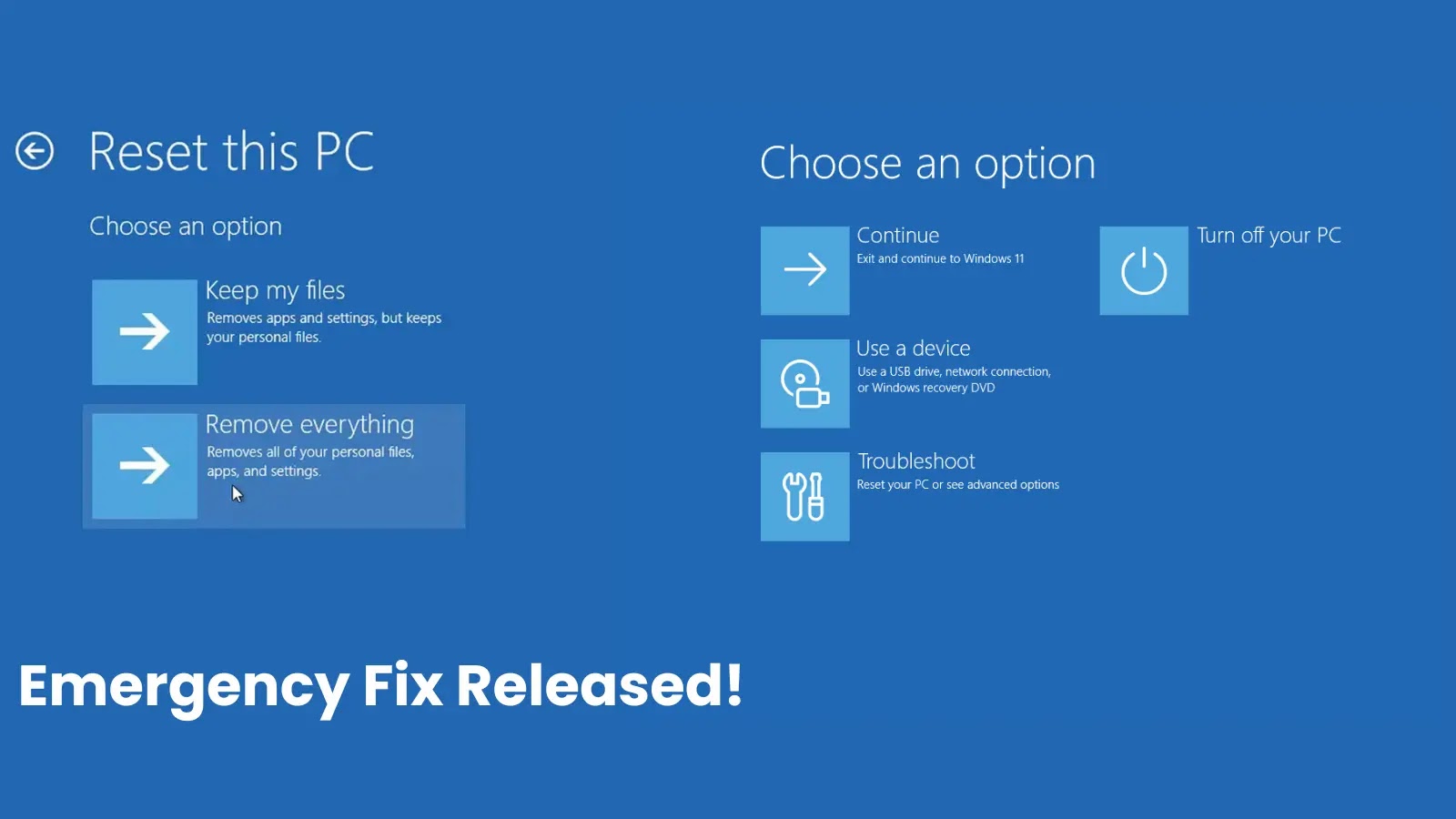
Microsoft Releases Emergency Updates to Fix Windows Reset and Recovery Error
Urgent Action Required: Microsoft Patches Critical Windows Reset and Recovery Bug
In a move underscoring the severity of the issue, Microsoft has released emergency out-of-band updates to address a critical flaw impacting Windows reset and recovery functionalities. This rapid deployment on August 19, 2025, highlights a widespread problem that left users unable to restore their systems or perform essential recovery operations on various Windows versions. Professional IT administrators and everyday users alike should prioritize the immediate application of these patches.
The Genesis of the Glitch: Post-August 2025 Updates
The core of the problem emerged directly following the routine deployment of Microsoft’s August 2025 security updates. While designed to enhance system security, these updates inadvertently introduced a critical bug that disrupted the fundamental ability of Windows to reset itself or utilize recovery options. This failure is a significant concern, as system reset and recovery are crucial last-resort tools for troubleshooting persistent software issues, removing malware, or preparing devices for transfer.
The impact was immediate and widespread, affecting multiple Windows versions. Users attempting to initiate a PC reset often found the process failing, leaving their systems in an unstable state or preventing them from resolving critical errors without complex manual intervention. The lack of a reliable recovery mechanism poses a substantial operational risk to businesses and individuals, potentially leading to data loss or prolonged downtime.
Understanding the Impact: Beyond Inconvenience
While seemingly a simple operational inconvenience, the inability to perform a system reset or recovery has far-reaching implications:
- Data Integrity Risks: Without a reliable reset option, users facing corrupted system files or severe software conflicts might resort to less controlled methods, increasing the risk of data corruption or loss.
- Malware Remediation Challenges: For systems infected with persistent malware, a full system reset is often the most effective and straightforward eradication method. The failure of this function complicates security incident response.
- Operational Downtime: IT departments rely on quick and efficient recovery mechanisms. A broken recovery process translates directly to increased downtime for affected machines and higher support burdens.
- Security Posture Degradation: The underlying instability introduced by this bug could indirectly compromise a system’s overall security posture, leaving it vulnerable to further issues.
Remediation Actions: Applying the Emergency Patches
Microsoft’s swift response in issuing these out-of-band updates is commendable. For all IT professionals, system administrators, and even home users, the immediate course of action is clear: apply these emergency patches without delay.
- Windows Update: The most direct method is through Windows Update. Ensure your systems are configured to receive and install updates automatically, or manually check for and apply the latest available updates.
- WSUS/SCCM: For enterprise environments, the patches should be available through Windows Server Update Services (WSUS) or Microsoft System Center Configuration Manager (SCCM). Deploy these updates across your network as a high-priority item.
- Patch Management Systems: Utilize any third-party patch management solutions in your environment to expedite the deployment of these critical fixes.
While Microsoft has not explicitly assigned a specific CVE number to this operational bug, its criticality warranted an emergency out-of-band release, bypassing the usual Patch Tuesday cycle. This response underscores the severity and widespread nature of the problem, affecting a core operating system function.
Looking Ahead: Proactive Patch Management
This incident serves as a crucial reminder of the importance of robust patch management strategies. While this particular issue was an unintended consequence of a prior update, the principle remains: staying current with security and stability patches is paramount.
- Staged Deployments: Consider implementing staged deployment strategies for non-critical updates to identify potential regressions early.
- Testing Environments: Maintain comprehensive testing environments that mirror your production setup to validate updates before widespread deployment.
- System Snapshots/Backups: Regular system snapshots and comprehensive data backups are non-negotiable insurance policies against unforeseen issues, regardless of patch criticality.
Conclusion
Microsoft’s rapid release of emergency updates to rectify the Windows reset and recovery error is a testament to the critical nature of this vulnerability. The inability to restore or reset a system effectively undermines fundamental operational resilience, making immediate remediation imperative. By promptly applying these essential patches, users and organizations can restore crucial system functionalities and fortify their defenses against potential lingering issues. Stay vigilant, prioritize your patch management, and ensure your systems remain secure and recoverable.





